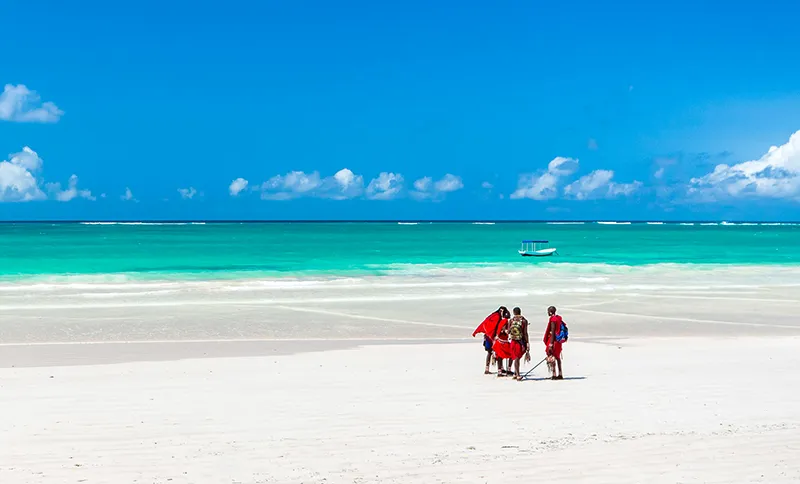The Sahara is expanding uncontrollably farther south, and each drought claims the lives of hundreds of thousands of Africans. No one knows how to stop the desert from advancing.
Giant dunes make the sands of the Sahara look like a yellow sea. Storms constantly change the face of the desert. And although the conditions here are almost unfit for human life, the desert is home to nomadic tribes of Tuaregs and Tedas.
History
Paleontological research shows that even a few thousand years ago dense forests grew on the territory of the Sahara. However, a change in the Earth’s orbit launched a process that created the largest desert in the world.
Desertification continues even now – every year the Sahara captures several square kilometers of fertile land. However, today we should mainly blame man for this.
In 1968 the western world first learned about the consequences of the drought in the Sahel, according to TV reports. The world shuddered when it saw the shocking images of starving children in the southern Sahara, where drought had killed nearly 200,000 people. The situation was even more dire in 1982-1984, when starvation affected 150 million people in 20 African countries. Since then, there have been ongoing fundraisers for the hungry around the world. However, reports from Africa are becoming more and more alarming.
It is obvious that it is almost impossible to solve the problem once and for all: the desert is growing, bringing more and more droughts; droughts lead to poverty, and poor countries cannot stop the advance of the desert. Africa needs fertile land, and the last forests there are being cut down for it. As the forests disappear, the climate changes – the rainfall decreases, and only rare plants survive on the parched land, and huge herds of cattle devour them as well, leaving a bare desert behind them. In addition, forests and bushes are disappearing at such a rate because 80% of Africa’s heat needs are met by burning firewood.
The largest desert in the world
The Sahara is the largest desert on the planet. It stretches from Northern Algeria to Niger and from Western Sahara to Egypt.
The Sahara occupies nearly one-third of northern Africa. The greatest desert in the world stretches for 6,000 km from the Atlantic Ocean coast to the Red Sea and for 2,000 km from north to south. Because of its extremely dry climate, hot winds and extreme temperature fluctuations, many regions of the desert are uninhabited; the central part of the Sahara is practically deserted.
In our imagination, we imagine the Sahara as an endless sea of sand with an undulating dune landscape, but in reality the sands make up only about 10% of its territory. The predominant landscape of the Sahara is endless stony plateaus, the hamads, which reach 400 meters above sea level. Between them rise the volcanic massifs of Ahaggar (in southern Algeria) and Tibesti (in southern Chad), which reach heights of up to 3,000 meters. To the south of them are vast areas covered with bizarre rocky blocks, and to the northeast lies the almost impassable sandy sea of the Libyan Desert.
In the central part of Algeria, right in the center of the arid zone, one finds quite a few oases. People have proven that effective artificial irrigation can turn a dead desert into fertile fields. But it is those countries that suffer the most from drought that lack the funds to design and build irrigation structures.
The north of the Sahara is rich in minerals. Algeria, Libya and Tunisia are producing oil and gas, and Mauritania and Western Sahara are developing deposits of iron ore and phosphate.
General Information
- The Sahara Desert includes: Morocco, Algeria, Tunisia, Libya, Egypt, Sudan, Chad, Niger, Mali, Mauritania and Western Sahara.
- Languages: Arabic, Berber (Kabyle, Tamashek).
- Religion: Islam.
- The largest mountain ranges are Ahaggar (Hoggar), Tibesti, and Ayre.
- Rivers: the Nile, the Niger, several small rivers (wadis) that dry up – the Dra in Morocco, the Sheliff in Algeria, etc.
- The area is 9 million km2.
- Highest point: Mount Emmi Kousi in the Republic of Chad (3,415 m).
- Lowest point: the Qattara Depression in Egypt (-137 m).
Climate and weather
- Desert. Extreme drought (in the Central Sahara, it never ends).
- Large differences between day and night temperatures.
- The average annual temperature is +23 ° C.
- The highest temperature recorded in the Sahara was +58ºС and the lowest – +19ºС.
Attractions
- “The city of Agadez in Niger is the “capital of the desert.
- Xar el-Souk (fortified villages) in the south of Morocco.
- Oasis at Lake Oniaga (Chad).
- Rock Art on the plateau Tassilin-Adjer (Algeria).
- The Ahaggar Mountains.
- The Tenere Desert, where the “loneliest tree in the world” grew.
Fun Facts
- According to one hypothesis, it was desertification that gave the impetus to the development of civilization. People forced by the desert into swampy river valleys were forced to develop technology to drain and irrigate the land.
- The name desert comes from the Arabic al-Sahra, which means “flat, flat place.
- Wadis are deep beds of desert rivers that tend to fill with water only after heavy downpours.
- The largest architectural structure in the Sahara is the mosque of the city of Agadez in Niger.




